A week ago today, on 3/29/13, I photographed a pair of courting Long-billed Curlews on Antelope Island. For sexual ID purposes, notice that the female of this species (on the right in this first image) is larger than the male and has a significantly longer bill. It’s also been my observation that the male is darker and redder than the female but I don’t see that mentioned in the physical descriptions in the field guides and other sources that I’ve read.
The male continually stroked (and attempted to stroke) the back of the female with his long bill, usually from more anterior to posterior toward the tail. At the time I estimated that he did this about 200 times in the few minutes I watched the behavior. Sometimes the female cooperated and sometimes she didn’t. Here she is running away from him but he was very quick and persistent, even on the run.
At least twice during that time he lifted one of her short tail feathers with the tip of his bill. Both times it happened so quickly that I didn’t even see it happen in the field and only noticed it when I looked at the images on my screen at home.
This was the second time he lifted her tail feather. It may have happened more often than that and I just didn’t catch it in my photos.
I’ve read detailed descriptions of courtship behavior in curlews and this feather lifting wasn’t mentioned in those accounts.
Last year (on 4/2/12 and in almost exactly the same place as the first three images in this post were taken) I photographed similar curlew courtship behaviors in a different pair of birds. The rest of these photos are from that encounter.
The male would raise his wings and circle the female in an attempt to get into position to stroke the back and tail of the female with his bill.
For a while she was cooperative and allowed him to do so by standing still.
But then she apparently tired of his attempts at foreplay and turned on him aggressively.
This “en garde” pose by the male is a defensive posture in response to her aggression.
But then she changed her mind and became more cooperative again by standing still and raising her tail as he caressed her. Notice that once again the male has raised some of the feathers near her tail.
But once again the (I won’t use the word “fickle”) female turned on him and this time she was adamant that she’d had enough of this silliness.
She attacked him with vigor…
so aggressively that she lost her footing in the loose soil as the male made his escape…
and got the “hell out of Dodge”.
My research indicates that the behaviors I photographed on both occasions are part of one of five different complex pair bonding behaviors in curlews. This one is called “shaking” because the male typically shakes his head and bill vigorously during parts of the display. But I didn’t notice that bill shaking on either occasion, which makes me wonder if that’s why the female didn’t accept the male for copulation either time.
Perhaps these two males hadn’t read the curlew courtship instruction manual…
Ron
PS – I’m been anthropomorphic at times in the text of this post. Couldn’t help myself.



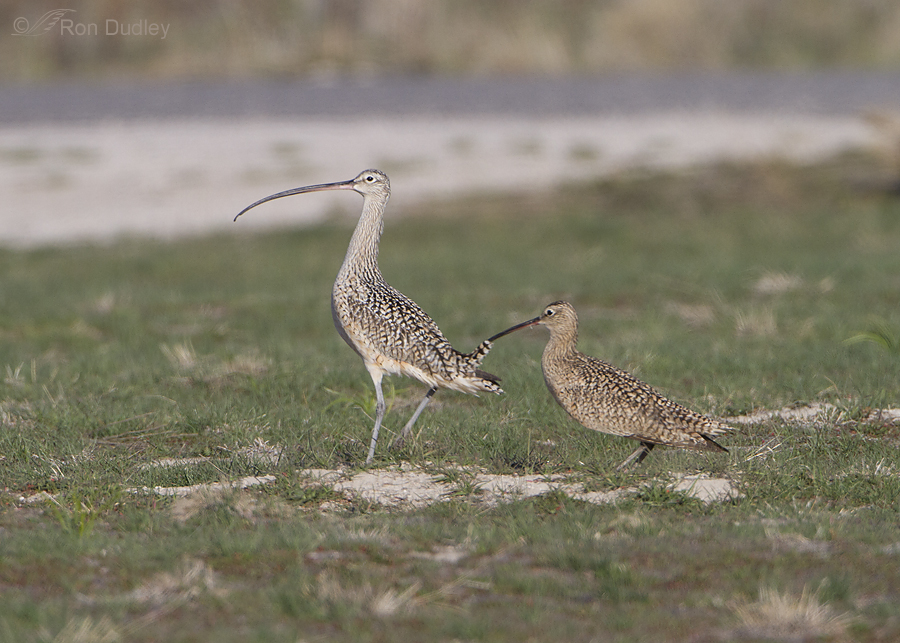
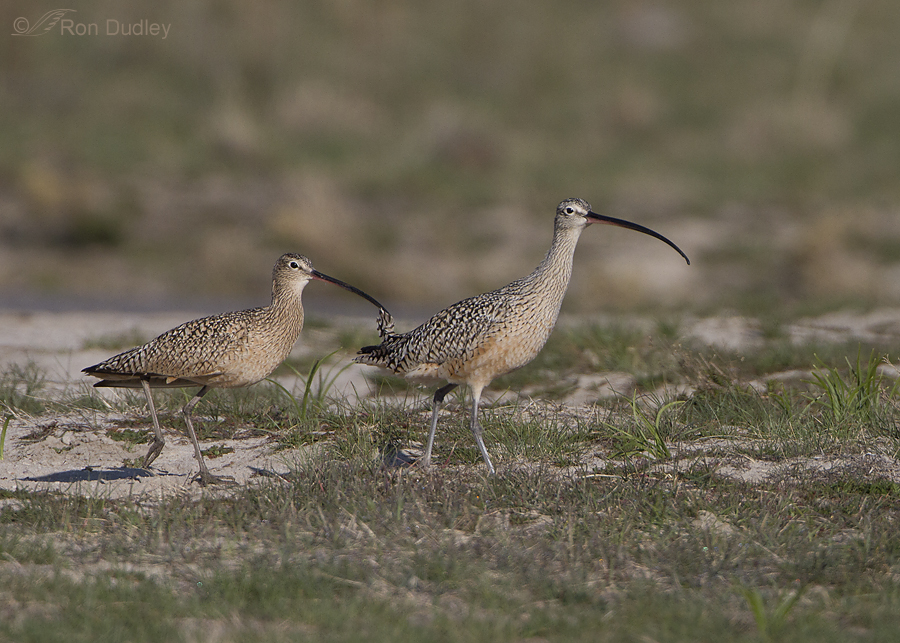
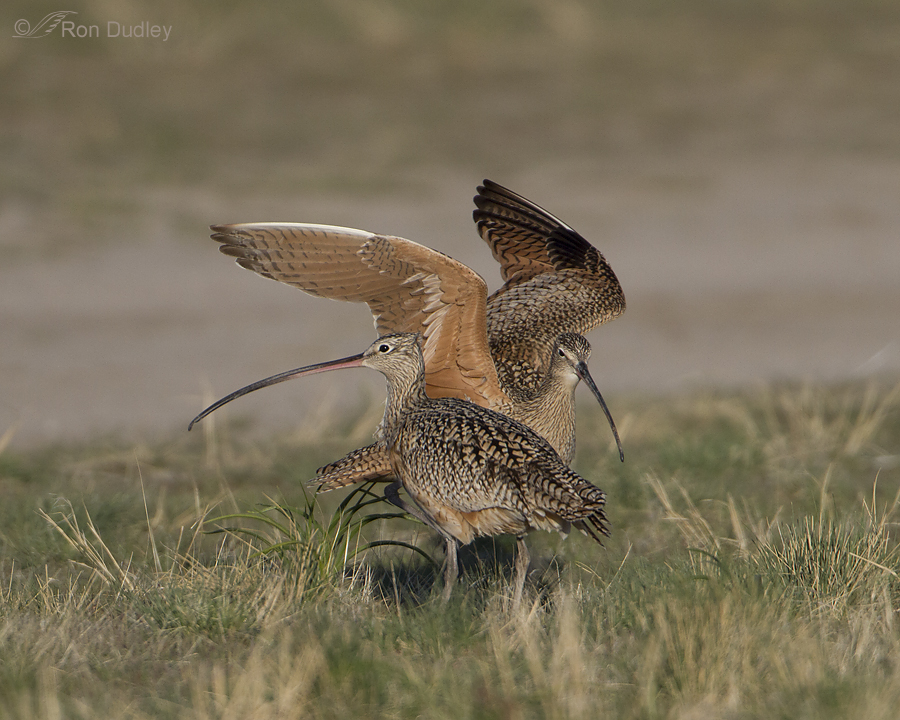

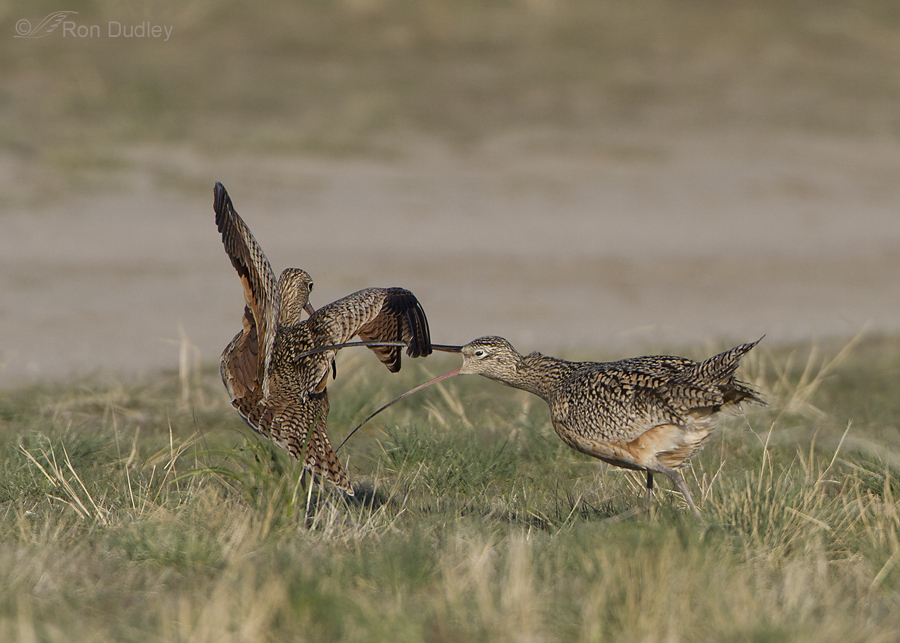
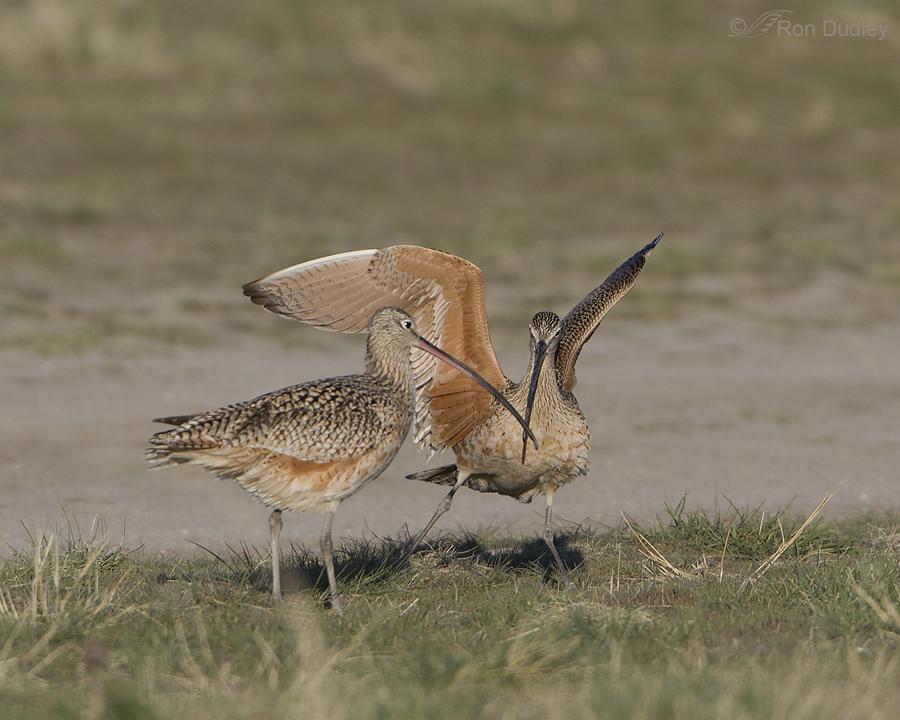
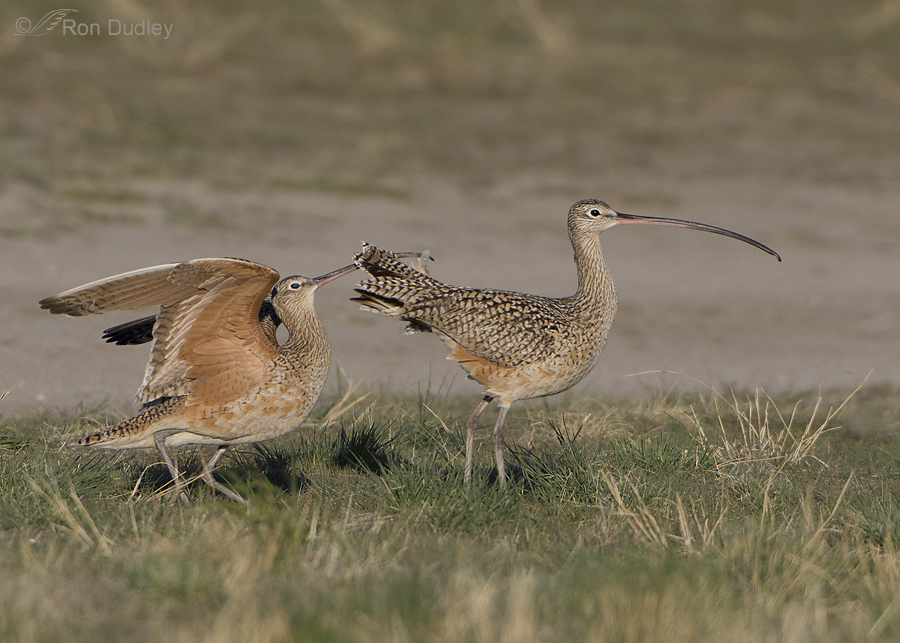
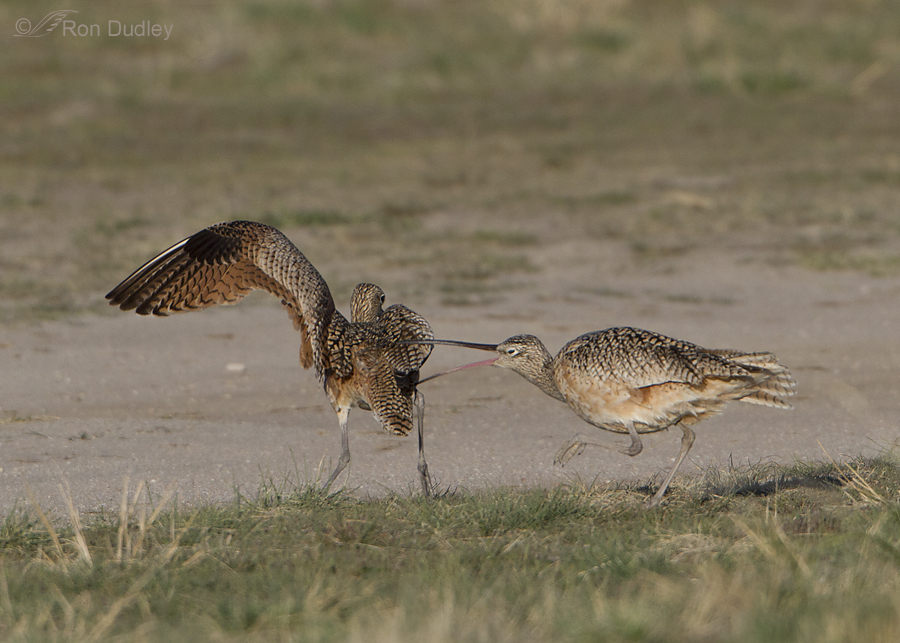


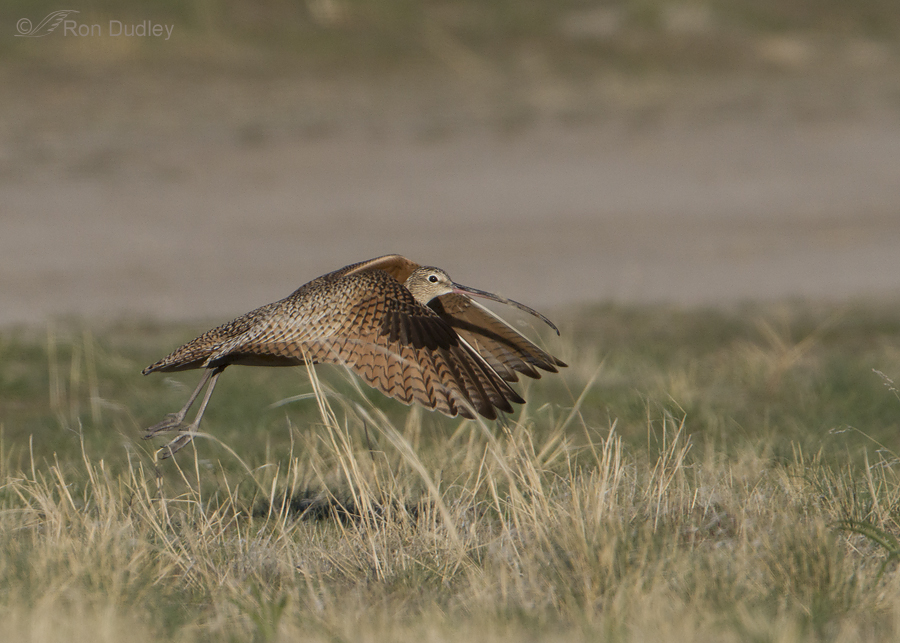
Now that spring is almost here and after observing your avocet courting photos I enjoy looking at your other courting behaviors series I have saved.
Makes me feel happy. Thanks so much.
Thanks Ron, this is another fascinating series. I suspect that the field guides only touch on the tip of the ice berg (so to speak). To be fair, if they didn’t it might require a book per species – and still there would be behaviours not covered.
And if something with a beak like that was suggesting that I wasn’t welcome I too would be vamoosing. Quickly.
Great series of captures!
Thank you, Cindy.
Ron, this is fascinating! Talk about being timely! Those long bills are something else!
Yes, that bill’s an attention getter, isn’t it Maria?
These birds have the most amazing color pattern on there underwings . A great story there and you tell it well.
They’re a little like Willets, Eldridge. Pretty much a plain looking bird until they raise their wings.
Wonderful post! Here in Florida we only see these birds during migration, and rarely at that. I just saw my first one this winter. The courtship display (and your description) is really interesting!
It was fascinating to watch, Wally – both times. Still haven’t seen them actually mating though.
Amazing to see the behavior. Such documentation goes FAR beyond field guide descriptions.
Thanks, Terry. I appreciate what you said about documentation and field guides.
Excellent images Ron, and don’t worry about being anthropomorphic, we all tend to do that when watching animal behavior.
Great series on Long-blled Curlew behavior.
Hope you don’t mind, but I would like to take one of your images and make a pattern for a carving I would like to do?
Thank you, Dick. I usually try to avoid blatant anthropomorphism but my impulses occasionally get the best of me.
I’ll respond to your image request via email.